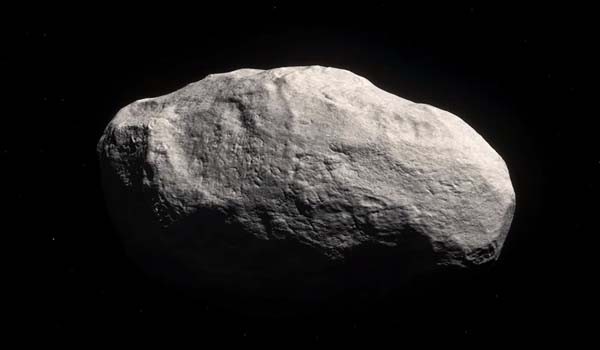A new paper published on April 29, Friday, dubbed the tailless comet as Manx, saying it is composed of material found in the inner solar system. Now scientists suspect the strange comet may have been born alongside the Earth.
Manx, the only known tailless comet, has actually sprung up from Earth's primordial material. The comet was formed in the inner solar system along with other planets, but was eventually jolted towards the outer edges by the chaotically dancing space debris, the research published in the Science Advances noted.
Comets are commonly made of ice and various other frozen compounds. They are formed in the outer solar system at extremely low temperatures and earn their alias 'shooting star' because they all bear a characteristic tail, which is actually a trail of evaporating surface matter, as they approach closer to the sun.
Manx was first discovered back in 2014 when it sauntered through the inner solar system before wandering off to the outer icy edges. The observation was first reported by the Panoramic Survey Telescope and Rapid Response System, or Pan-STARRS.
Researchers say that the comet was formed 4 billion years ago, the same time Earth was born. However, planetary gravitation pulls acted like a sling, shooting off Manx towards the Oort cloud located 100 Astronomical Units from the Sun.
One Astronomical Unit is equal to 150 million kilometers or 190 million miles, and so Oort cloud really marks outer boundaries of the solar system. It takes Manx 860 years to complete a single revolution around the Sun, Wall Street Journal reported.
When a typical comet approaches closer to the Sun, its icy surface vaporizes off its mass due to heat, giving out a trail that shines brightly in the sunlight. However, Manx became an exception to this rule because its innards were composed of what asteroids between Mars and Jupiter were made of.
The existence of Manx unlocks the possibility of other tailless comets in the Sun's neighborhood and they could help scientists figure out the time when the solar system settled into its current setting. According to the co-author of the study Olivier Hainaut, the number of tailless comets could help calculate the number of giant planets when they were young.
The tailless comet's scientific name is C/2014 S3 where 2014 represents the year of Manx's discovery. Interestingly, the namesake of the tailless comet is inspired from a tailless breed of cat which also lacks a tail. The outer layer of the comet appeared pristine due to its prolonged stay in the deep freeze zones. Here is the video explanation of how tailless Manx circles around the Sun.



























